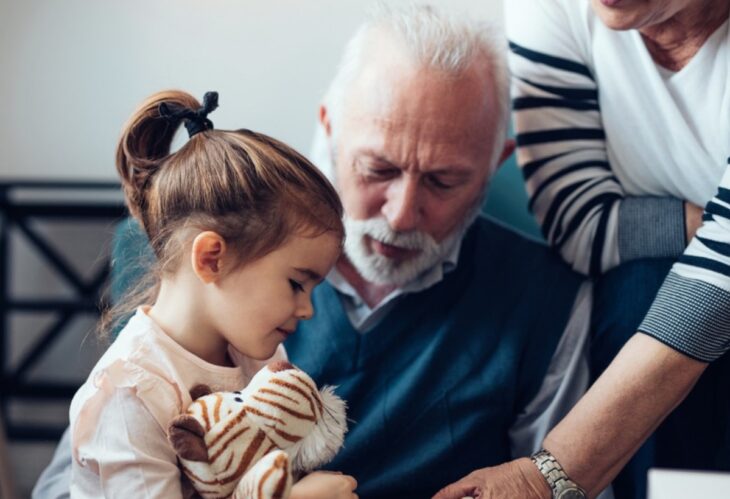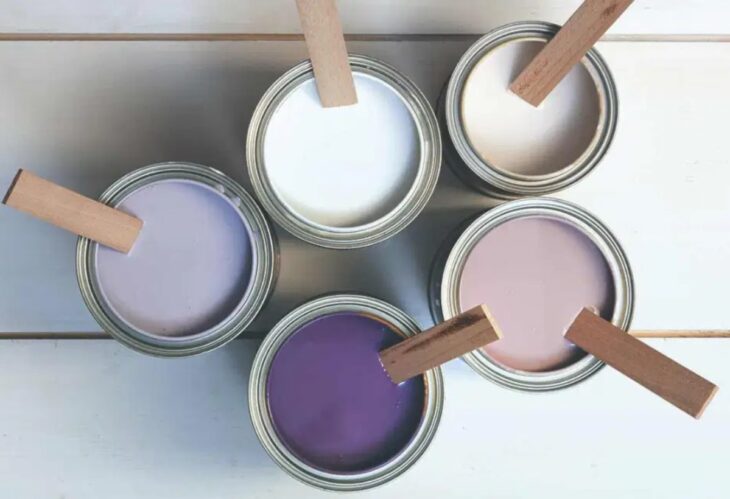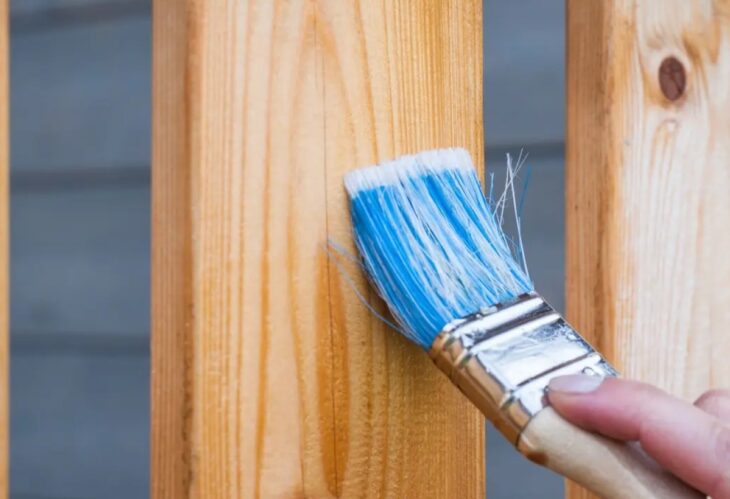When the baby arrives, you world turns upside down. Not only does your perspective change, but you would do anything for your baby and suddenly you are watching her/his every move, worrying that they might get injured somewhere as they explore the world around them.
Also, you are more aware of what they eat and how they behave. You don’t want to keep anything in your home that might be harmful for your kid and that is completely understandable. And yet, there comes a time when you need to renovate a room or paint a crib or your home.
And you must be wondering how to do it safely. Do paint and the invisible fumes that come from it hurt your kid in any way? The smells aren’t pleasant for you either, but you can stand a couple of days of strong paint odor.
Therefore, if you are to do some painting and you have a baby at home, here’s what you need to know:
Contents
1. If you can, take the baby to your grandparents’

Source: Best Life
No matter which paint you are going to use (and we will discuss that shortly), the best solution would be to take the baby to your grandparents’ for a day or two. If your parents or in-laws live close by, this is an ideal situation for everyone involved.
First of all, you would get some free time to do what’s necessary in your home and paint the crib, without watching over your kid. This will make you be more efficient and you can focus on the task at hand. Secondly, even if the paint is baby-safe, you wouldn’t have to worry about them accidently touching it or sticking their hands in the can.
Last but not least, the grandparents will enjoy spending some time with their grandson/daughter and if something pops up you can always visit and see the kid. Instead of worrying whether the paint is safe for your baby or not, you clear all the confusion from the start!
2. Use baby-safe paints

Source: Small Footprint Family
If you can, you should use baby-safe paints. However, if you’re a new parent, you probably have no idea what are we talking about. And that’s completely OK.
Whether painting a crib is your DIY project, or you are calling someone to assist you, make sure you buy pain with is labeled as no-VOC or VOC-free. What is VOC?
It is an acronym for volatile organic compounds and regular paints have small amounts. However, there are specially made paints that are designed for baby rooms and that’s something to ask for. The good news is that there is a variety of colors, just like with regular paints, so you have nothing to worry about.
These are a part of the water-based paints, but there are also natural paints, which are slightly different, but based on the same principle. If you are not sure which paint to go for, Playparachutes.com has come up with the list that can help you out! Make sure you check it out before you progress.
3. Avoid Lead-based paints

Source: Healthline
One of the dangerous elements that paints contain is lead. This hasn’t be known in the past, but lead is something even adults should avoid. Of course, very small amounts of lead cannot do any harm, but for a baby, even smaller amounts might cause problems.
There’s a way to test the paint for lead. The baby-friendly paints we have discussed above should be lead-free, but it doesn’t cost you anything to go one step forward and make sure everything is ok. The problem is if your toddler scrapes of the paint and put their hand in their mouth.
When the paint dries off, there is a very small chance for something like this to happen, but you can never be too cautious.
4. Do the work outside

Source: Baby Cribs Central
Keep in mind that you are not only painting the crib. If you found some old crib in the attic (yours perhaps) you need to strip off the old finish and sand it before you start painting. If you have the option, do the work outside, in your backyard.
The reason for it is that the sun will help the paint dry off more quickly and the mess that you will make will be outside your home, therefore, easier to clean later on.
We understand that not everyone has a yard and people in the apartments might find this an issue. If you live in a city and you have nowhere to go but your home, you can speed up the process by opening the windows and causing an intensified air flow. That way, your crib will dry off more quickly.
Something else you can do is isolate yourself in a room and do all the work there. This is a must if the baby is with you – don’t let it approach the paints! The easiest way to do it is to keep it in the next room, of course with someone looking after her.
Conclusion
When you are painting something in your home (we used a crib for the purpose of this article) and you have a baby around, you need to be more alert than you already are. There are some things to do to minimize risks that are involved. As we’ve said, your baby can spend some time outside your home (if that is possible).
When it comes to paint itself, make sure you inspect the label and look for “no-VOC”. Ask the store if they can recommend you some paint if you are not sure what you are looking for. Last but not least, do your work outside or in a separate room. That way, you will be able to focus more easily and it is the safest way for your baby.
